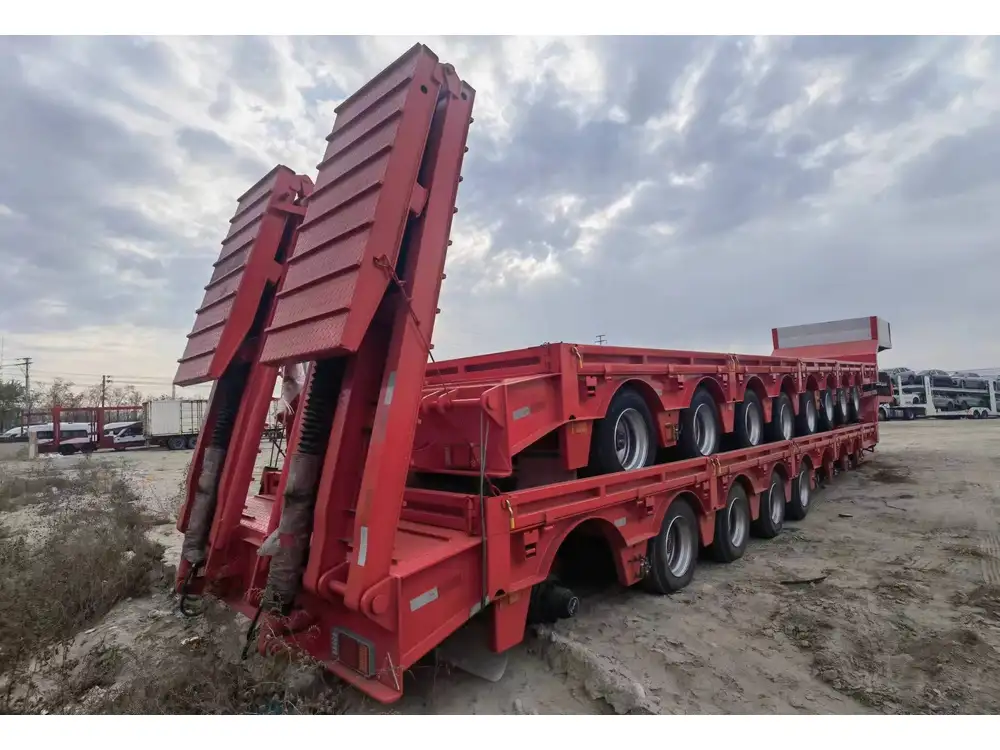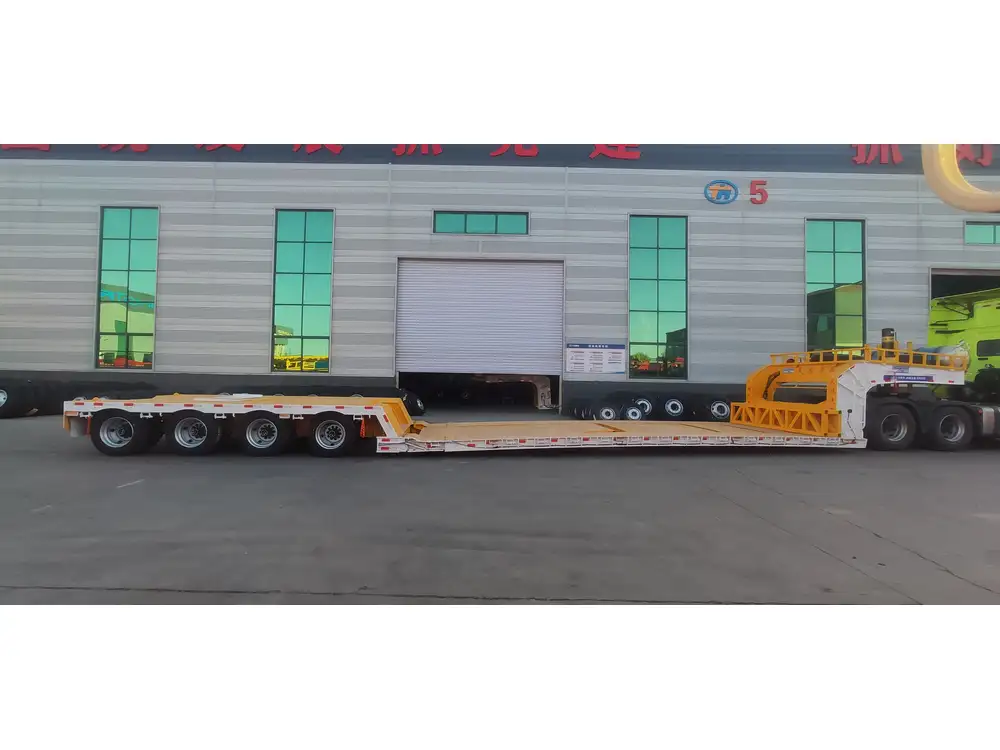Loading a semi-trailer is a critical component of efficient transportation logistics that contributes significantly to safety and operational efficiency. The following guide will take you through the fundamental principles, techniques, and best practices necessary for loading a semi-trailer correctly.
Understanding the Basics of Semi-Trailer Loading
Types of Semi-Trailers
Before diving into loading techniques, it is essential to know the different types of semi-trailers available. Each trailer type has its unique loading requirements:
| Trailer Type | Description | Loading Considerations |
|---|---|---|
| Flatbed | Open platform without sides; offers versatility. | Use tarps for weather protection; secure cargo with straps. |
| Dry Van | Enclosed box trailer for cargo protection. | Ensure even weight distribution; use dunnage to fill gaps. |
| Reefer | Refrigerated trailer for temperature-sensitive loads. | Avoid blocking air vents; load perishables first. |
| Tanker | Designed for liquids, often with a round shape. | Load liquids evenly; ensure proper venting. |
| Step Deck | A flatbed with a lowered deck section, for taller cargo. | Secure tall loads; be mindful of overhead clearance. |

Loading Zones and Safety Preparedness
- Designated Loading Zones: Utilize marked loading areas within your facility or at distribution centers to ensure a clear and safe working environment.
- Personal Protective Equipment (PPE): Always wear suitable PPE like hard hats, gloves, and high-visibility vests to enhance safety during the loading process.
- Traffic Control: Enforce clear traffic control measures to prevent accidents, ensuring that spotters assist during the loading process.
Step-by-Step Guide to Loading a Semi Trailer
Step 1: Assess Your Load

Load Weight and Dimensions
Calculating the total weight and dimensions of the load is paramount. To ensure compliance with regulations and road safety, consider:
- Gross Vehicle Weight Rating (GVWR): Understand the maximum weight your semi-trailer can carry.
- Center of Gravity: A lower center of gravity ensures stability during transport. Place heavier items at the bottom.
Load Classification
Identify whether the load falls under general freight, hazardous materials, or perishable goods. This classification affects the loading method considerably.
Step 2: Plan the Load Arrangement

Weight Distribution
Achieving proper weight distribution helps maintain trailer stability and prolonged tire life. Utilize the following methods:
Front-to-Back Distribution: Keep the weight balanced between the front and rear axles. Aim for a weight ratio of 60% in the front half and 40% in the back.
Side-to-Side Distribution: To avoid tipping incidents, ensure an even distribution of weight across both sides of the trailer.
| Weight Distribution Tip | Ideal Ratio | Checkpoints |
|---|---|---|
| Front-to-Back | 60% (Front) | Reinforce with a scale for precise measures. |
| Side-to-Side | 50% (Each Side) | Evaluate visually and correct as necessary. |
Step 3: Secure the Load
Tools for Securing Cargo
Securing the load involves using proper tools and techniques to prevent shifting during transportation:
- Straps: Ratchet straps, tie-downs, and chains should be used to secure loads adequately, avoiding any potential for shifting.
- Dunnage: Utilize wood or foam dunnage to fill gaps and avoid load movement; this is especially important for fragile items.

Techniques for Securing
- Direct Tie-Downs: Attach directly to the load itself; this method is vital for ensuring no upward movement.
- Over-the-Top Tie-Downs: Place straps over the cargo to prevent lateral movement; effective for tall and unstable loads.
Step 4: Loading Techniques
Common Loading Methods
Different loading methods suit various cargo types:
Forklift Loading: Utilize forklifts for heavy pallets; ensure that the operator has a clear path and follows established safety protocols.
Gravity Loading: For loose material (like bulk aggregate), allow the material to flow into the trailer through gravity.
Hand Loading: For smaller, more intricate items, hand loading may be necessary, ensuring that the weight distribution still follows the principles established earlier.

Step 5: Final Inspection
Visual Check
Conduct a thorough visual inspection before departure:
- Load Tightness: Ensure all cargo is secured properly.
- Equipment Check: Inspect all securing equipment for wear and tear or damage.
Step 6: Document the Load

Preparing Accurate Paperwork
- Load Sheet: Create a load sheet that details the cargo type, weight, and dimensions, and ensure copies are accessible to the driver and receiving party.
- Bill of Lading: This crucial document accompanies the load, containing vital information about the cargo, such as destination and handling instructions.
Important Considerations for Special Cargo
Handling Hazardous Materials
When transporting hazardous materials, strict adherence to regulations and safety protocols is essential:
- Labeling Requirements: Ensure all cargo is labeled correctly according to standard regulations.
- Use of Proper Containers: Utilize compliant containers for dangerous goods.

Dealing with Perishable Goods
For loads that include perishable goods, it is vital to consider:
- Temperature Controls: Ensure that reefer units are set at the required temperatures.
- Watch for Expiration Dates: Rotate stock to avoid expired goods during transport.
Flatbed Loading Challenges
Flatbed trailers often present unique loading challenges, such as wind and weather exposure. Implement the following strategies:
- Tarpaulins and Covers: Make use of tarps to protect loads from environmental elements.
- Wind Conditions: Be mindful of high winds that may affect loading stability.
Conclusion: Mastering Semi Trailer Loading
Effective semi-trailer loading is not merely about placing cargo onto the trailer; it involves a comprehensive understanding of loading techniques, safety measures, and compliance with various regulations. Proficiency in these practices directly impacts operational efficiency, safety on the road, and the overall success of your logistics operations.
As you implement the strategies outlined in this guide, your ability to load trailer efficiently will enhance, thus improving your operational workflow and ensuring safer transit. Remember that consistent practice, ongoing training, and adherence to best practices will lead to mastery in loading semi-trailers, securing both cargo and the satisfaction of your clients.
For further resources and advanced training tips on loading and logistics operations, feel free to reach out to industry experts or consult dedicated logistics platforms. Your journey towards loading excellence begins now!



